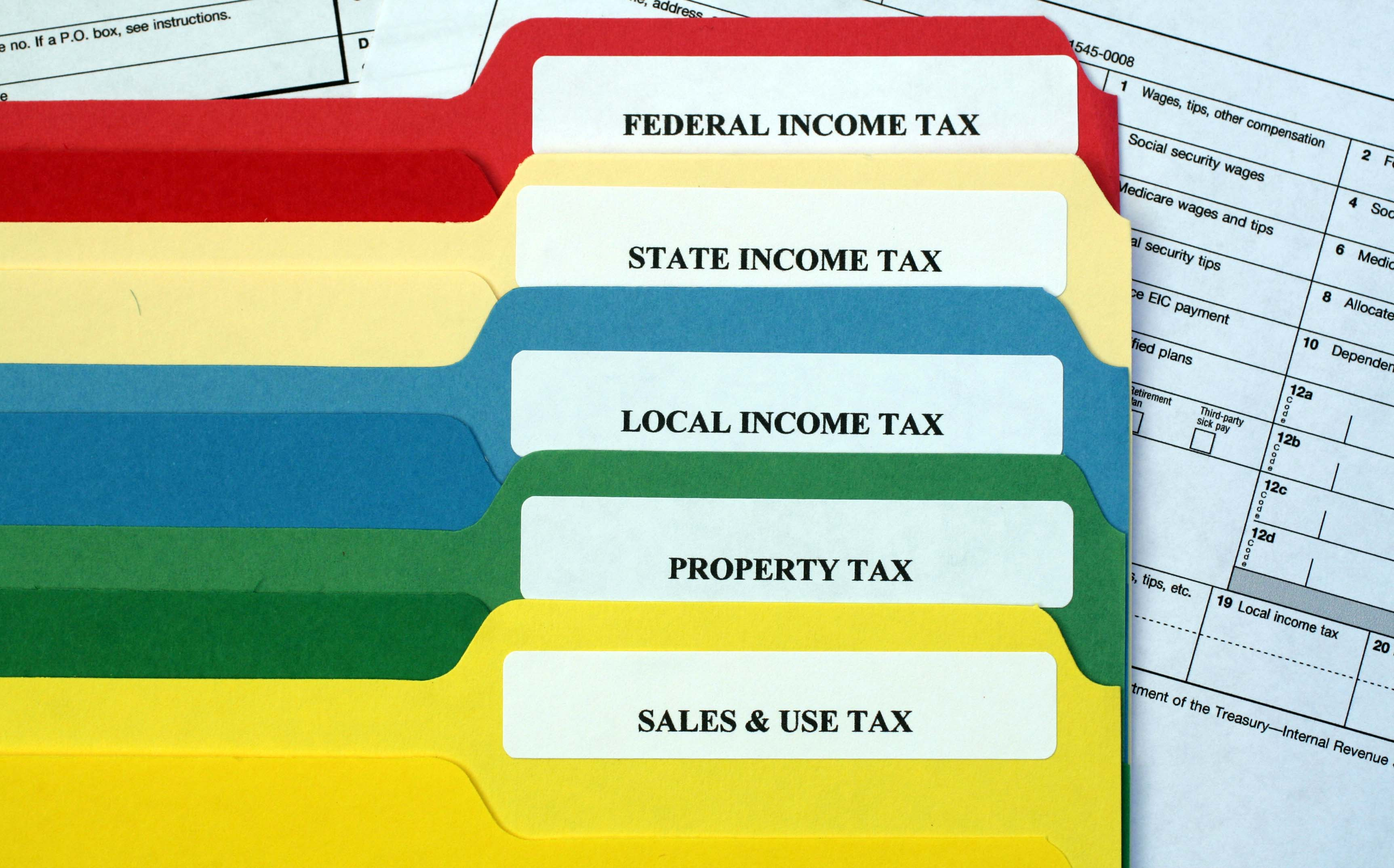Ten Overlooked Tax Deductions and Credits
Don’t miss these often overlooked tax deductions and credits when you file your tax return this year.

Gabriella Cruz-Martínez

Tax season is underway, and if you’re not careful, there are a few tax credits that you may be missing out on.
The IRS expects more than 140 million individual tax returns for the 2025 tax year to be filed before the April 15 deadline. From family tax credits for dependents and children to deductions on student loan interest or your mortgage, there are tax breaks available to help you navigate each stage of life.
If you qualify, claiming the deductions and credits on this list could lower your tax bill or — in some cases — result in a tax refund. In no particular order, here are 10 tax deductions and credits you might be able to claim during the 2026 tax season.
Overlooked deductions and credits
There are several tax deductions and credits that are often overlooked by taxpayers because they don’t know that they exist.
Some of the tax deductions below require you to itemize deductions. While most people take the standard deduction, itemizing can result in a higher deduction for some.
To determine which option is best for you, calculate all your allowable itemized deductions. If the total is higher than the standard deduction for your filing status for the 2025 tax year, itemizing deductions might be a good option.
Related: A Bunch of IRS Tax Deductions and Credits You Need to Know.

Charitable donations tax deduction
If you itemize deductions, don’t forget about all the charitable contributions you made throughout the year. These can include cash, property (for example, art and home furnishings), and even out-of-pocket expenses incurred for volunteer work. You may have even made some tax-savvy donations during the holiday season.
When reviewing charitable donations, you can only deduct qualifying donations from an IRS-recognized tax-exempt organization or 501(c)3.
If you had to drive for your volunteer work, you can deduct expenses one of two ways.
- Deduct the actual cost of gasoline.
- Deduct 14 cents per mile.
Just remember to keep receipts from charitable organizations and good records of your contributions and your mileage (or fuel) costs, and keep in mind that not every donation is considered tax-deductible. To deduct a contribution on your tax return, the charity must be an approved tax-exempt organization. You can use a search tool on the IRS website to see which organizations qualify.
Additionally, the IRS imposes additional requirements when donating gifts worth $250 or more. IRS Publication 1771 details requirements for making tax-deductible charitable contributions.
For more information, see the Tax Deduction for Charitable Contributions.

Student loan interest deduction
No one likes paying student loan interest, but doing so might save you money at tax time.
That’s because you can deduct up to $2,500 (or the actual amount, whichever is less) of the interest paid on qualified student loans in 2025. The interest paid can be on any qualified student loan that you took out for yourself, a spouse, or someone who was dependent at the time you took out the loan. And the best part is you can take the student loan interest deduction, even if you don’t itemize deductions when you file.
However, not everyone who paid student loan interest is eligible to deduct student loan interest payments on their 2025 federal tax return (taxes generally filed early 2026).
- You can’t deduct student loan interest if you’re married and filing separately.
- If you or your spouse (if filing jointly) are claimed as a dependent on another tax return, you can’t take the student loan interest deduction.
- Additionally, some higher-earning taxpayers are disqualified from deducting student loan interest.
Can you deduct student loan interest paid by a parent? Taxpayers can also deduct student loan interest if a parent pays their student loans, as long as they can no longer be claimed as a dependent.
If you paid more than $600 in qualified student loan interest in 2025, you should have received a Form 1098-E.
For more information, see Don’t Miss This Up to $2,500 Tax Break for Paying Your Student Loan.

Retirement savings contribution tax credit
Contributions to traditional IRAs and 401(k)s aren’t taxed, but some people who contribute to these (and select other) retirement accounts qualify for even bigger tax breaks.
Better known as the Saver’s Credit, the retirement savings contribution tax credit allows eligible filers to claim a tax credit worth up to $1,000 ($2,000 if married filing jointly).
The amount of the credit depends on your contribution amount, your filing status, and your adjusted gross income (AGI). If your 2025 AGI exceeds the income thresholds below, you aren’t eligible to claim the Saver’s Credit.
- $76,500 for joint filers
- $57,375 for head of household filers
- $38,250 for all other filers
For more information, see The Saver’s Credit: Who Qualifies for This Retirement Tax Break?

Gambling Losses
Gambling winnings, which include lottery winnings from Mega Millions and Powerball, are considered taxable income. However, winners can reduce their tax liability by deducting gambling losses. Lottery losses aren’t the only types of losses that qualify.
- Losses for scratch-off tickets are deductible.
- Losses from gambling at a casino are deductible.
- Even losses from betting on the Super Bowl or races qualify as deductible expenses.
However, there are a few catches. Taxpayers can only deduct gambling losses if they itemize, and you can’t deduct losses that exceed your winnings.
For more information, see: Taxes on Gambling Winnings and Losses.

Tax credit for other dependents
Some taxpayers can receive tax credits for dependents, regardless of age. For example, while the 2025 child tax credit only applies to qualifying dependents under age 17, older children and even adults could be considered qualified dependents for the purpose of claiming the tax credit for other dependents.
The credit is worth up to $500 for each qualifying dependent. However, the same dependent cannot qualify for both the child tax credit and the credit for other dependents. The IRS has a tool that taxpayers can use to determine whether or not their dependent qualifies for the tax credit for other dependents.
Note: The 2025 Trump/GOP tax bill, signed in July 202,5 made this $500 credit permanent, so it will not expire at the end of this year.
Also: To qualify as a "qualifying relative" for this credit in 2025, the dependent's gross income must be less than $5,200 (up from $5,050 last year).
Speaking of family tax credits, there’s a federal tax break available for low- and moderate-income workers with or without children. The Earned Income Tax Credit (EITC) is a refundable credit. Its amount depends on your filing status and the size of your household.
For instance, a single filer with no children and an income up to $19,330 can earn a maximum credit of $649 for 2025, while families with three or more children can receive a maximum credit of $8,046.
For more information, see: Earned Income Tax Credit (EITC) 2025: How Much Will You Get?

Tax deduction for jury pay
Some employers require employees to surrender jury pay. This can sometimes occur when an employee continues to receive their regular salary while serving jury duty.
Jury pay is considered taxable income by the IRS, but any amount surrendered to an employer is tax-deductible.
Taxpayers can deduct surrendered jury pay, whether or not they take the standard deduction, but the IRS does not allow a tax deduction for jury pay that the employee keeps.

Child and dependent care credit
While several taxpayers know the child and dependent care credit exists, some might miss out because they don’t think their child care expenses qualify. You can use more than traditional daycare expenses to calculate the credit.
- Summer day camp expenses qualify for the credit.
- Preschool tuition is a qualified childcare expense.
- Even payments you make to relatives who babysit could qualify as an expense (excluding your spouse, the parent of the child, a dependent you will claim on your return, or your child if under the age of 19).
Taxpayers can receive a nonrefundable credit of between 20% and 35% of up to $3,000 ($6,000 for two qualifying dependents) of qualifying childcare expenses. To qualify for the child and dependent care credit, the expenses must have been incurred so you (and your spouse if filing jointly) could work or look for work.
Additionally, dependents over age 13 are not considered qualified dependents for the purpose of claiming the credit. However, care expenses for a dependent with a disability may qualify, regardless of age.
For more information, see Kiplinger's report Child and Dependent Care Credit: How Much Is It?

SALT deduction
The state and local tax (SALT) deduction allows taxpayers to deduct state and local taxes paid to certain governments. This deduction is only available to those who itemize rather than take the standard deduction.
For 2025, the new Trump tax overhaul has significantly raised the limit: you can now write off up to $40,000 ($20,000 if married and filing separately) of eligible taxes paid, which may include the following:
- State income taxes or state and local sales taxes (not both)
- Real estate taxes
- Personal property taxes
It’s important to note that there is a new income-based phaseout for this higher cap.
If your modified adjusted gross income (MAGI) exceeds $500,000, the $40,000 limit begins to decrease by 30 cents for every dollar over that threshold, eventually reverting to the old $10,000 limit once you hit $600,000.
A qualified tax professional can help you determine which taxes you paid in 2025 are deductible.
For more information, see: SALT Deduction: Three Things to Know Now.

Deducting mortgage points
You may know that you can deduct mortgage interest, but mortgage points, sometimes referred to as loan origination fees, maximum loan charges, loan discount, or discount points), are also tax-deductible for those who itemize deductions.
If more than $600 of mortgage interest was paid in 2025, homeowners will receive a Form 1098 from their lender, which will also include mortgage points paid. However, interest and mortgage point amounts reported on the form might differ from the amounts you can deduct this year.
The IRS has specific rules for who can claim mortgage points in the year they were paid and who can’t. In addition to other requirements, taxpayers must deduct points over the life of the loan if either of the following applies:
- The points were paid to refinance a mortgage
- The points for a second home
Homeowners can use a tool on the IRS website to determine whether their mortgage points are fully deductible for a given tax year.
Note: A new change to keep an eye on: the 2025 Trump tax bill permanently reinstated the deduction for mortgage insurance premiums (PMI). While this officially takes effect for the 2026 tax year (returns filed in early 2027), you should check your 2025 Form 1098 closely. Some lenders might begin reporting these figures early in anticipation of the new rules.

Tax-deductible moving expenses
Moving expenses are only tax-deductible for members of the U.S. Military. Additionally, only expenses incurred for moves due to a military order and for a “permanent change of station” are deductible.
However, if any of the following apply, the spouse of an Armed Forces member may also qualify to deduct moving expenses.
- The service member deserts
- The service member is imprisoned
- The service member dies
Unreimbursed relocation costs incurred for returning home from a post of active duty qualify as tax-deductible for service members and their spouses. For more information, see IRS instructions for Form 3903.
Related
Profit and prosper with the best of Kiplinger's advice on investing, taxes, retirement, personal finance and much more. Delivered daily. Enter your email in the box and click Sign Me Up.

Katelyn has more than 6 years of experience working in tax and finance. While she specialized in tax content while working at Kiplinger from 2023 to 2024, Katelyn has also written for digital publications on topics including insurance, retirement, and financial planning and had financial advice commissioned by national print publications. She believes knowledge is the key to success and enjoys providing content that educates and informs.
- Gabriella Cruz-MartínezTax Writer
-
 What to Watch for When Refinancing Your Home Mortgage
What to Watch for When Refinancing Your Home MortgageA smart refinance can save you thousands, but only if you know how to avoid costly pitfalls, calculate true savings and choose the right loan for your goals.
-
 The 10 Best Splurge Destinations for Retirees in 2026
The 10 Best Splurge Destinations for Retirees in 2026Come for the luxury vacation. Retire for the lifestyle (if the vacay goes well). What better way to test a location for retiring abroad?
-
 Builders Are Offering Big Mortgage Incentives — What Homebuyers Should Watch For
Builders Are Offering Big Mortgage Incentives — What Homebuyers Should Watch ForBuilder credits and below-market mortgage rates can ease affordability pressures, but the savings often come with trade-offs buyers should understand before signing.
-
 States That Tax Social Security Benefits in 2026
States That Tax Social Security Benefits in 2026Retirement Tax Not all retirees who live in states that tax Social Security benefits have to pay state income taxes. Will your benefits be taxed?
-
 3 Major Changes to the Charitable Deduction for 2026
3 Major Changes to the Charitable Deduction for 2026Tax Breaks About 144 million Americans might qualify for the 2026 universal charity deduction, while high earners face new IRS limits. Here's what to know.
-
 Retirees in These 7 States Could Pay Less Property Taxes Next Year
Retirees in These 7 States Could Pay Less Property Taxes Next YearState Taxes Retirement property tax bills could be up to 65% cheaper for some older adults in 2026. Do you qualify?
-
 Estate Tax Quiz: Can You Pass the Test on the 40% Federal Rate?
Estate Tax Quiz: Can You Pass the Test on the 40% Federal Rate?Quiz How well do you know the new 2026 IRS rules for wealth transfer and the specific tax brackets that affect your heirs? Let's find out!
-
 5 Types of Gifts the IRS Won’t Tax: Even If They’re Big
5 Types of Gifts the IRS Won’t Tax: Even If They’re BigGift Tax Several categories of gifts don’t count toward annual gift tax limits. Here's what you need to know.
-
 The 'Scrooge' Strategy: How to Turn Your Old Junk Into a Tax Deduction
The 'Scrooge' Strategy: How to Turn Your Old Junk Into a Tax DeductionTax Deductions We break down the IRS rules for non-cash charitable contributions. Plus, here's a handy checklist before you donate to charity this year.
-
 Tax Refund Alert: House GOP Predicts 'Average' $1,000 Payouts in 2026
Tax Refund Alert: House GOP Predicts 'Average' $1,000 Payouts in 2026Tax Refunds Here's how the IRS tax refund outlook for 2026 is changing and what steps you can take now to prepare.
-
 New IRS Changes to FSA Contribution Limits for 2026: What to Know
New IRS Changes to FSA Contribution Limits for 2026: What to KnowHealth Care Flexible Spending Accounts have tax advantages worth looking into, especially in light of new IRS changes.
